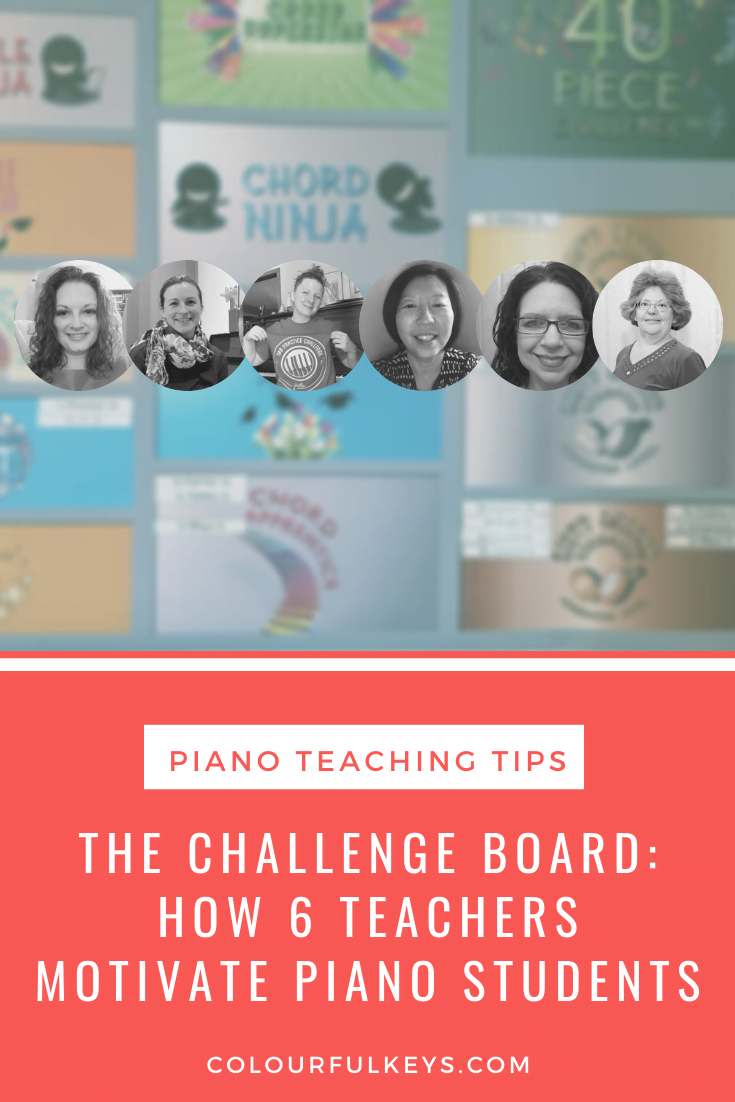We all could use some motivation tips from other piano teachers from time to time. Especially when it comes to motivating students to practise scales, sight reading and practice strategies.
I know that seeing what other teachers are doing in their studios is often what inspires me to branch off and try new things in my studio too. 🙂

I first created the challenge board in my studio as a way to motivate my piano students to practise some of the less exciting parts of music study.
It quickly turned into a fantastic tool for me as well. It helped me to systematise what I was doing with my students so that I wasn’t constantly debating which scale to teach next or whether their sight-reading was up to level.
Over time, more and more teachers have adopted this system for motivating their piano students and now teachers all around the globe use some version of a challenge board in their studio.
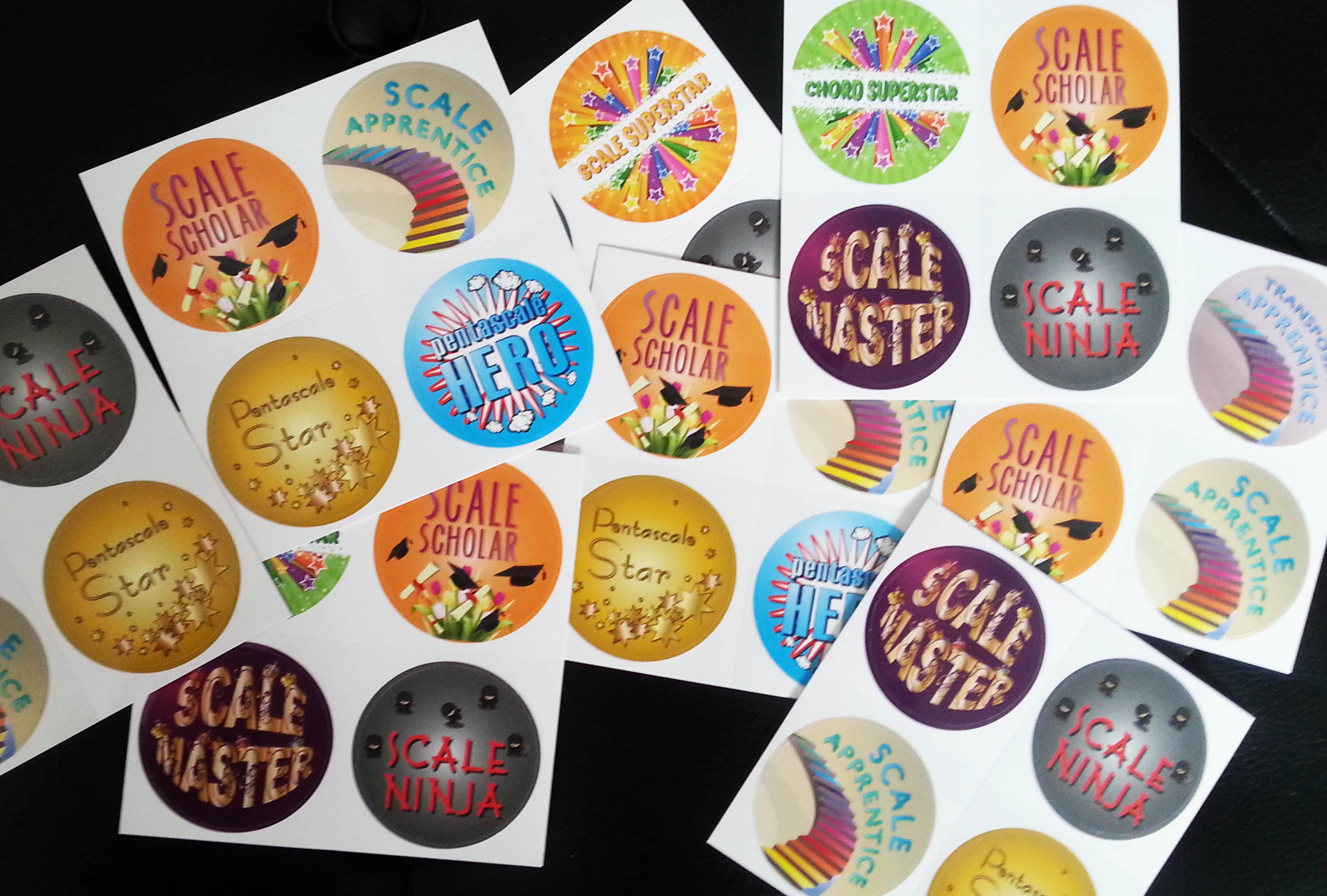
Subscribe to the newsletter and get the challenge posters and stickers
Enter your details to subscribe to the newsletter for piano teachers with information, tips and offers.
I hate spam as much as you do! I will only send you emails related directly to piano teaching and you can unsubscribe at any time.
Members can instantly download the full set of posters and stickers, including individual posters for each challenge.
Not a Vibrant Music Teaching member yet? This is the perfect time for you to check out the membership program for teachers!
I’m a big believer in letting teachers do their thing, their way. That’s why I love how many different takes there are on my original board and levels. 😀
In this article, 6 piano teachers are throwing open their studio doors to share motivation tips from their own challenge boards. I hope it inspires you to consider using one for your studio.
After reading the motivation tips from these piano teachers, head over to my Piano Practice page for assignment sheets, ideas about setting goals, and more.
From Erin Bullard

As a teacher, I believe that my own attitude and energy levels are directly reflected in how my students learn. Keeping my studio going through the pandemic with my 3 primary-age children at home, on top of an abandoned, massive home renovation, I needed something to lean on!
The challenge board is perfect for addressing all the bits in music education which can be most difficult to learn.
Songs are fun. Scales, sight-reading, practicing…maybe not so much.
I can put a student on one or two challenge tracks according to his or her level. It really makes a difference to reinforce what they’re learning in their music and broaden their skills, allowing them to be creative in their own musical expression.
To set up my challenge library and board, I created a dedicated binder for challenges where I keep instructions, time sheets, tracking grids etc, in each section according to challenge.
I printed an A3 poster with my home printer, mounted it on cardboard and covered it with clear contact paper. I then use laminated student name tags to stick on each challenge with blue tack.

At the end of each month, I take a snapshot of the board to congratulate everyone who has completed a challenge that month and post it on my studio Facebook page. Students also love receiving the badges for their music binder cover.
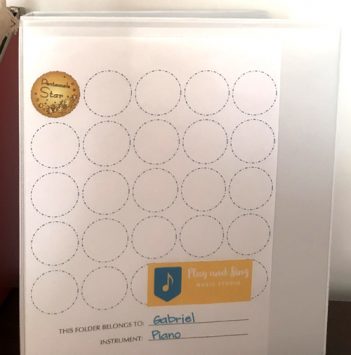
I’ve taken most of the challenges straight from the Vibrant Music Teaching resources. However, since I also teach guitar, I have modified the 60-Second Challenge and chord challenges to include different sets of notes and chords learned in progression. I’m in the process of modifying the scales challenges to reflect shapes on the guitar rather than major/minor. Someday I would love to create custom challenges to reflect the scale requirements for each exam grade. (I typically use Trinity or ABRSM in the UK.)
Check out Erin’s studio on her Facebook page.
From Jonelle Utt
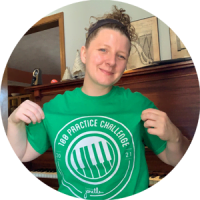
This year, I began incorporating Nicola’s challenge board for the first time to motivate my piano students. I was wanting to start chords with several students, so it was a natural addition. The students enjoyed coming in and seeing the new names added for completing chord challenges.
Since the board was well-received, I ran a 100 Day Practice Challenge by challenging students to do 100 practice sessions in 22 weeks (about 4-5 sessions per week). It was a little different than Nicola’s challenge with 100 consecutive days, but I felt this way would work better for our studio. I strategically held the challenge during a time when practice is difficult — fall break, Thanksgiving, Christmas, etc. My hope was to encourage consistent practice routines.
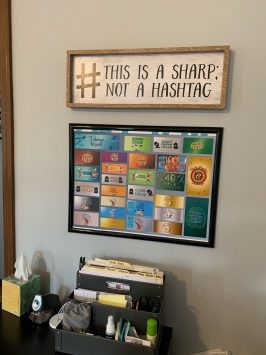
47% of my students conquered the challenge! I made a fun logo print for a celebratory photo op, and then I surprised them with shirts after the challenge was officially over.
I loved how the board added more community to our studio and not a spirit of competition. They truly were cheering each other on!
Find out more about Jonelle on her studio website.
From Sarah Folkerts

The challenge board plays a central role in my studio. It certainly motivates students (kiddos and adult students alike!) to work on those less-than-thrilling assignments, but that’s not all. For me, the challenge board also:
- Serves as a visual reminder for students of the progress they’ve made
- Allows students and their parents to see where they are in their journey
- Helps me structure and plan my teaching, making it more consistent and predictable
- Fosters both a sense of community and of friendly competition among students
Like many other teachers, I didn’t start off by using every single challenge on the board. In fact, I only started with the 60 Second Challenges. But it wasn’t long before I realized how powerful the challenge board could be. Now, I use almost every challenge on the board in one way or another.
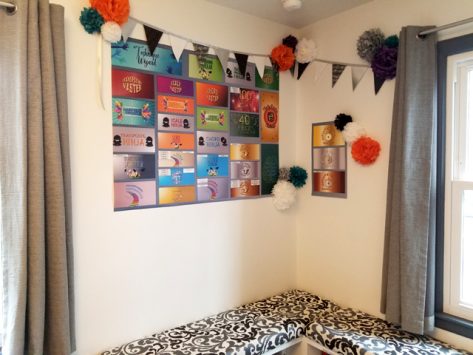
All of my students are working on their own scales, chords and sight reading challenges as a regular part of their lessons. I rotate in transposing, note naming, and the newer Minterval challenges on a seasonal basis.
I’ve found the challenge charts, booklets and backing tracks from the VMT Library to be a pretty good fit for my studio, so I generally tend to stick close to those rules. There are a few minor things I have adjusted, though. For example, I don’t require my students to play arpeggios for their scales challenges; I’ve moved those to the chords track.
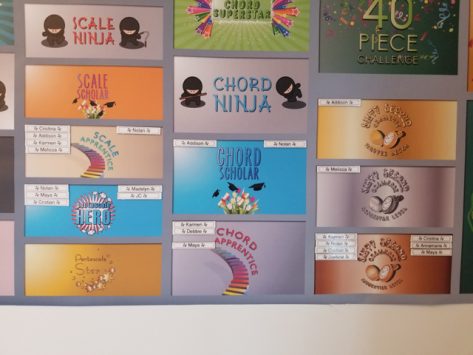
The poster is attached to the wall with removable poster putty. I use a label maker for the students’ name tags, stick the labels on cardboard and cut them out. Add little more poster putty to put the names on the poster, and voilà!
I ordered both the poster and the stickers online from Vistaprint. In the US, their 36″ x 48″ semi-gloss poster with lamination was a pretty good fit for the A0-sized pdf file. The 1.5” x 1.5” circle sticker – matte worked perfectly for the stickers.
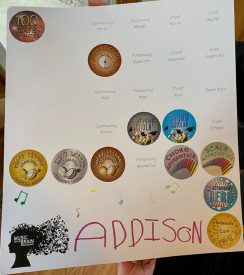
See more from Sarah on her studio’s Facebook page.
From Dana McCabe

Most of my students are pretty excited by the challenges and work hard to achieve them. I have some ultra competitive students who work super hard to get through each level, and some who only get there because it is part of their lesson (such as the sight reading challenge.) My students get to choose from a prize box when they achieve a level, so that is one thing I do differently than other teachers.
I have adapted the Challenge Board to my own style of teaching. For example, I added 2 levels to the sight reading challenge so there are 5 levels total. My students complete 20 examples for the first level, 30 for the second level, etc.
So while it is a great way to motivate my piano students, it is even more so a great organizer for myself!
I started with the just the 60-Second Challenge, then gradually worked my way up to this:

I printed the posters on card stock and laminated them. To create my own posters, I just used a Google doc and printed on coloured card stock. I print the names of my students on white card stock and stick them up with a bit of tape or poster putty.
I’ve continued the challenge board this past year being 100% online. I keep it updated and post photos of it in my studio Facebook page once in a while.
Read more from Dana on her Facebook page.
From Helen Raymaker

The challenge board provides a structure to the activities I have in the studio. For example, the Chord Superstar Challenge provided a great way for us to work with my studio’s “Big Idea” of chords last year. I now send links to the iReal Pro tracks and chord charts from my Google Drive as I teach online. This challenge has been a great bridge to learning lead sheets.
The challenge board also provides a long-term way for me to frame my goals when talking to parents. I can say to them “next year we will start the chord challenges” or “next year we will start scale challenges.” This lets the parents know I am thinking into the future for their child, not just the next few lessons or even the next few months. I believe that message helps me retain students.
Another beautiful aspect of this challenge board is that it allows me to pick and choose the challenges I wanted based on any number of factors.
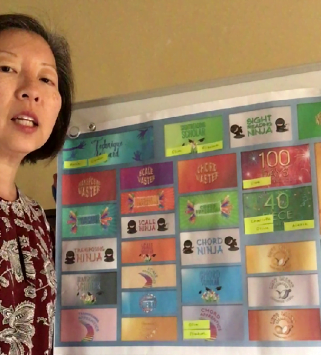
At first, I used individual posters just for the specific challenges I wanted to start in my studio. Now I have the full challenge board, even though I don’t use every challenge in my studio. It’s convenient to have everything on one poster.
I had the poster printed at the local copy shop very inexpensively, and use small post-it notes for name labels. I tried various combinations of materials, and simple actually worked best.
To hear more from Helen, head on over to her studio website.
From Sarah Hughes

I love Nicola’s motivation tips for piano teachers, especially her idea of a challenge board. It’s the perfect way for me to make sure all curriculum areas are covered while keeping students invested in the process.
I don’t use the exact challenge board from Vibrant Music Teaching because I wanted to follow different benchmarks in my studio. So I adapted her idea to fit my own challenges which roughly correlate to local AMEB exam requirements. The columns of my adapted challenge board are the different curriculum areas and the rows are levels. Novice level is equivalent to Preliminary and Legend is Grade 5+.
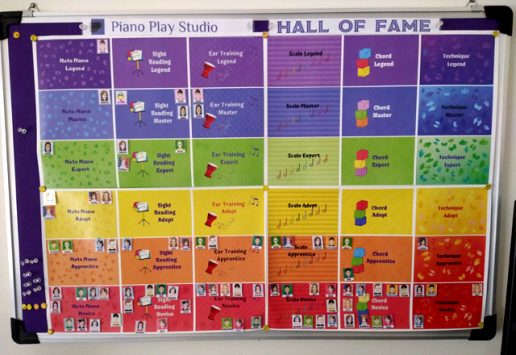
I created the poster in Canva, along with matching stickers for my students to put on their achievements folders. My students create their own avatars on Avachara. I print and laminate them, and use Blu Tak poster putty to attach the avatars to the poster.
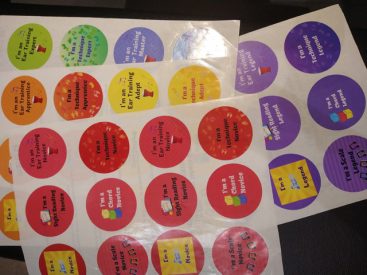
I’ve been really delighted by the effectiveness of this system! Students love to look at the board, and it’s been a better motivator than any reward system I’ve used previously. I can easily identify any weakness or gaps in their learning, especially with transfer students.
Learn more about Sarah on her studio website.
How do you motivate piano students?
Do you use the challenge board, or some other tried-and-true motivational gem? We’d love to hear your motivation tips for piano teachers in the comments below. 🙂
